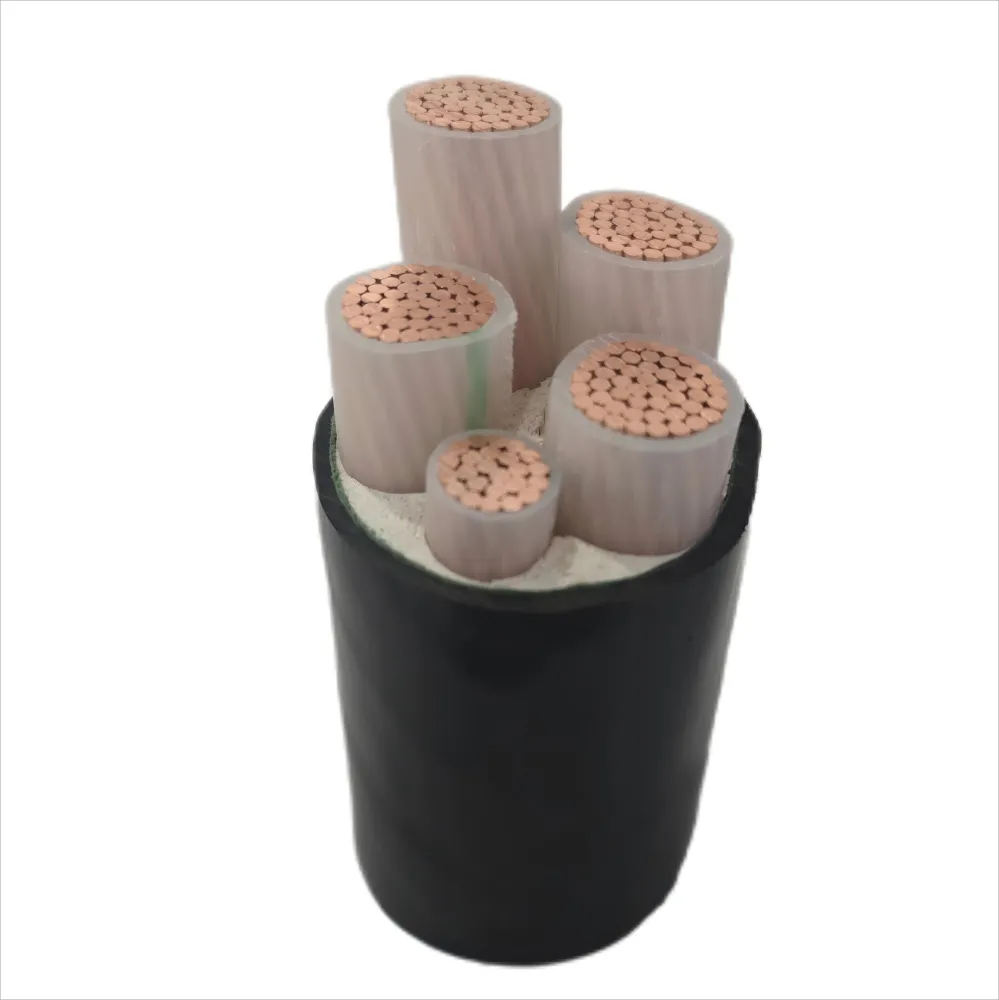Time: 2025-04-24 14:49:40 Source: Henan Province Jianyun Cable Co., Ltd.

Low Voltage Wires: These wires operate at voltages below 50V (AC or DC), often used for control, communication, or low-power applications. Examples include control wires (e.g., 24V for thermostats, as discussed earlier), telecom cables (e.g., Ethernet), or DC cables for solar systems (e.g., 12V–48V). They typically carry signals or small amounts of power, like a 0.5 mm² control wire in a smart home system.
High Voltage Wires: These wires operate at higher voltages, typically above 50V, such as 120V–230V for household wiring (e.g., 14-2 NM-B, 2.5 mm² cables discussed earlier) or 1kV–35kV for medium voltage distribution (e.g., ACSR aerial cables). They deliver significant power to appliances, machinery, or grids, like a 230V AC cable powering a home’s outlets.
The voltage difference creates potential issues when these wires are run together, as high voltage wires generate stronger electromagnetic fields that can interfere with low voltage signals. Running low voltage and high voltage wires together is like placing a quiet phone call next to a loud concert—you risk the message getting drowned out or distorted.
Running low voltage and high voltage wires together can lead to several risks, primarily due to electromagnetic interference (EMI) and safety hazards:
These risks are like “cross-talk” in a crowded room—high voltage wires can “shout” over low voltage wires, disrupting communication and creating dangerous situations.
While it’s generally not recommended to run low voltage and high voltage wires together, it can be done safely with strict adherence to guidelines and best practices. The table below summarizes key recommendations:
| Aspect | Guideline | Purpose |
|---|---|---|
| Separation Distance | Maintain 150 mm (6 inches) minimum distance | Reduces EMI and safety risks |
| Conduit Use | Use separate conduits for low and high voltage | Prevents interference and ensures safety |
| Shielding | Use shielded low voltage wires (e.g., foil shield) | Minimizes EMI from high voltage wires |
| Crossing Wires | Cross at 90-degree angles if necessary | Reduces induced interference |
| Labeling | Label wires clearly (e.g., per IEC 60446) | Avoids confusion during maintenance |
Separation Distance: Electrical codes like the National Electrical Code (NEC) Article 725 in the U.S. and BS 7671 in the UK recommend a minimum separation of 150 mm (6 inches) between low voltage (e.g., Class 2 control wires) and high voltage (e.g., 230V AC) wires when run parallel. This reduces EMI and safety risks.
Separate Conduits: Use separate conduits or raceways for low and high voltage wires. For example, a 24V control wire for HVAC should be in a different conduit from a 230V AC power cable (e.g., 14-2 NM-B), as discussed in prior house wiring contexts. If sharing a conduit is unavoidable, use a divider or listed cable (e.g., MC cable with proper insulation ratings).
Shielding and Grounding: Low voltage wires should be shielded (e.g., foil or braided shield, as in control wires) and grounded to minimize EMI, especially in industrial settings near high voltage equipment (e.g., motors).
Crossing at 90 Degrees: If low and high voltage wires must cross, they should do so at a 90-degree angle to minimize induced interference, as parallel runs increase EMI exposure.
Local Codes and Standards: Follow regional standards—e.g., Russia’s GOST R or Saudi Arabia’s SASO may require additional fire safety measures (IEC 60332) if wires are near each other. In the U.S., NEC Article 300.3(C) allows low and high voltage in the same enclosure only if all conductors are insulated for the highest voltage present (e.g., both rated for 600V).
Following these guidelines is like setting up “separate lanes” on a highway—keeping low voltage and high voltage wires apart ensures they travel safely without causing accidents or interference.
Running low voltage wires (e.g., 24V control wires, telecom cables) with high voltage wires (e.g., 230V AC, 14-2 NM-B) is generally not recommended due to risks like electromagnetic interference (EMI), signal distortion, safety hazards, fire risks, and code violations. However, it can be done safely by maintaining a 150 mm separation, using separate conduits, shielding low voltage wires, crossing at 90-degree angles, and following local codes (e.g., NEC, BS 7671, SASO). These best practices ensure safety, signal integrity, and compliance in electrical installations, whether in homes, industrial settings, or smart city projects.